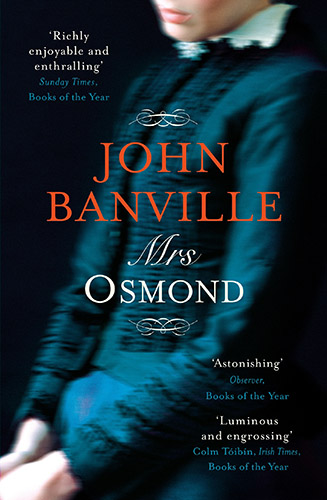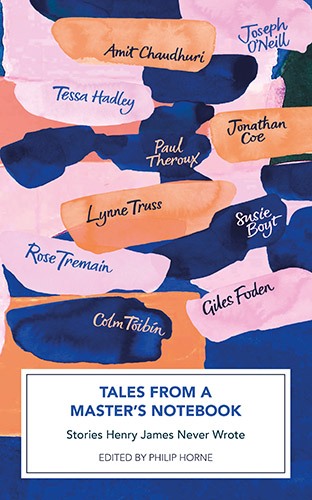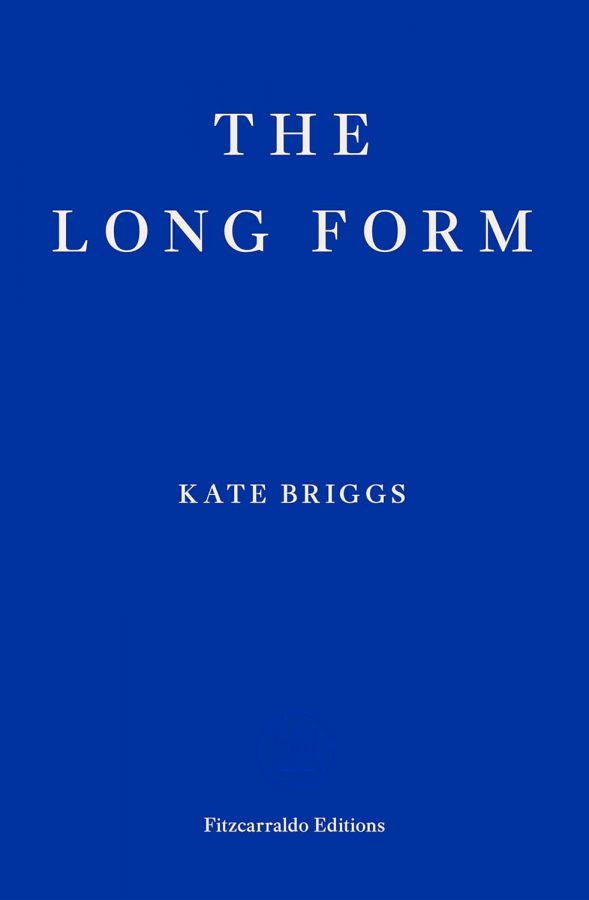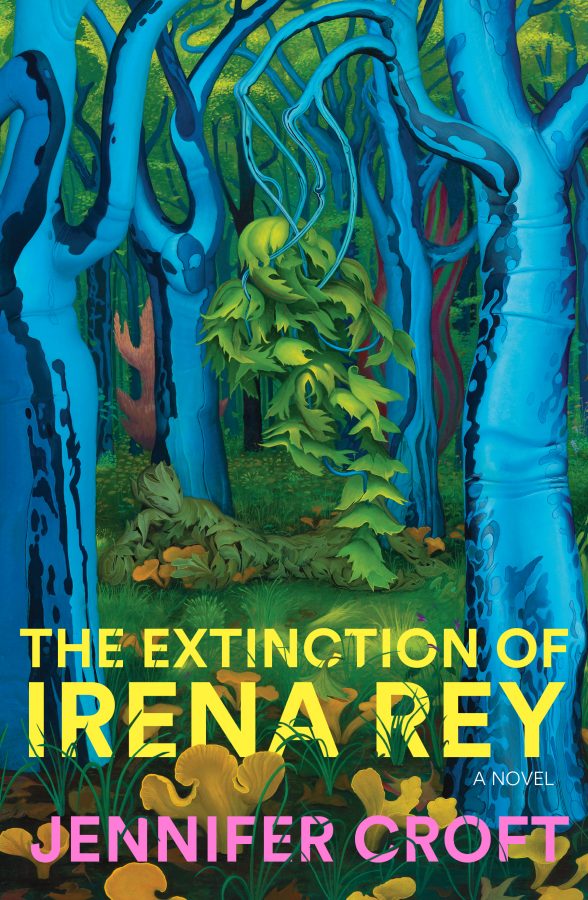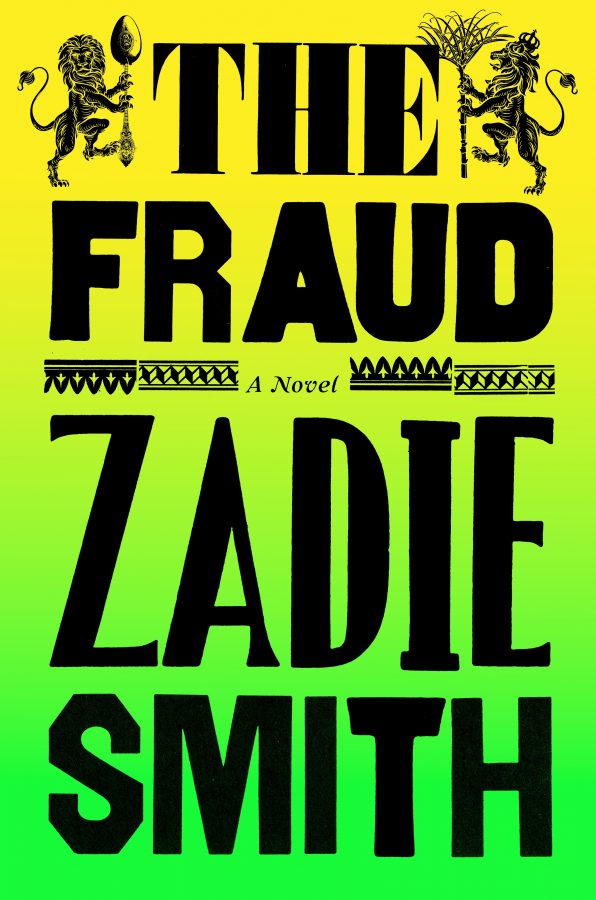It was probably inevitable that someone would try their hand at continuing the story of Isabel Osmond (née Archer), the heroine of Henry James’s classic The Portrait of a Lady (1881). That novel’s famously irresolute ending seemed to leave the door open for future developments, as James himself half-acknowledged at the time of writing it. In the notebook entry he used to sketch out the plot after Isabel’s marriage to Osmond, James wrote:
The obvious criticism of course will be that it is not finished – that I have not seen the heroine to the end of her situation – that I have left her en l’air. – This is both true and false. The whole of anything is never told; you can only take what groups together. What I have done has that unity – it groups together. It is complete in itself – and the rest may be taken up or not, later.
Unlike his friend and fellow-novelist Robert Louis Stevenson, who resumed the story of David Balfour where it had been left at the end of Kidnapped (1886) and continued it in Catriona (1893), James resisted the temptation to write a sequel to his most celebrated work. Now, nearly 140 years after the publication of The Portrait of a Lady, the esteemed Irish novelist John Banville has taken up the challenge.
It’s a strange sort of sequel, though, that takes so long to progress beyond the original story. If a sequel is an ensuing narrative, that is not exactly what we have here. Of the 36 chapters that make up Mrs Osmond, the first thirteen chapters remain within the temporal compass of The Portrait of a Lady. So, more than one-third of Banville’s novel is spent either going over ground already covered by James, or filling in the two-day lacuna in his record of the heroine’s actions before she leaves England at the end of the novel. This makes Mrs Osmond a mixture of retelling and extension; a continuation of James’s novel but also, to a significant extent, a duplication of it – an adaptation and even, in part, a copy.
Presumably the substantial overlap of Mrs Osmond with The Portrait of a Lady is designed to provide the background information readers who don’t know James’s novel will need if they are to make sense of Isabel’s rather peculiar situation. Yet I can’t help feeling Banville might have done better to trust his readers, and his story, a little more, by striving less for continuity and allowing the new fiction to take off more freely from its source. There’s an interesting contrast in the more cavalier approach Stevenson took towards writing the second part of David Balfour’s story:
The join is bad; I have not thought to strain too much for continuity; so this part be alive, I shall be content. But there’s no doubt David seems to have changed his style, de’il ha’e him! And much I care, if the tale travel!
Being overly concerned about continuity with the source may have the same deadening effect on a sequel as an excessive concern with fidelity to the original can have on adaptations. Stevenson wasted no time at the beginning of Catriona explaining where David Balfour was coming from or how he got there. At the end of Kidnapped David walks through the doors of the British Linen Company’s bank in Edinburgh, and the first sentence of Catriona has him walking back out again, this time into an entirely different kind of life. Stevenson realized that, so long as the new story is alive and the tale travels, questions of continuity and fidelity are of secondary importance.
Banville has chosen another path, though: the path of imitation. And judged by the standard he makes us invoke, he fails, as he was bound to do. Here is his rendering of Isabel’s thoughts as she looks back on her life with Gilbert Osmond, during which she imagines herself to have been ‘crouched in the cramped confines of the little model dwelling that she had so handily fashioned’:
And the fact was, of course, that her husband had not been with her in that little house, but had been outside it all along, standing upright and at his leisure, with his hands in his pockets, and only leaning down to peep in at her amusedly now and then where she sat huddled with her arms circled about her knees and her head so sharply inclined she could see little more than the tips of her toes.
It seems a foolhardy move for any author to invite comparison with the passage we already have, from James:
But when, as the months elapsed, she had followed him further and he led her into the mansion of his own habitation, then, then she had seen where she really was. She could live it over again, the incredulous terror with which she had taken the measure of her dwelling. Between those four walls she had lived ever since; they were to surround her for the rest of her life. It was the house of darkness, the house of dumbness, the house of suffocation. Osmond’s beautiful mind gave it neither light nor air; Osmond’s beautiful mind, indeed, seemed to peep down from a small high window and mock at her.
Banville’s twist on the original is to say that Isabel, not her husband, built the metaphorical ‘dwelling’ in which she passed her married life, and it’s a good point, worth thinking about. But the stylistic turn he brings to the extended metaphor has the effect of diminishing the emotional charge of James’s writing. To be ‘crouched in … cramped confines’ is a far less terrifying fate than to be walled up in ‘the house of suffocation’. In Banville’s version, Isabel is an Alice-in-Wonderland figure, a girl who has got herself into an awkward predicament; in James’s version, she is a woman frightened for her life. And Banville’s Osmond is an amused observer of his wife’s predicament, instead of the malevolent imp who spies on Isabel’s suffering in James’s original. Just look at how differently each writer plays the card of that little word ‘peep’.
Banville has set himself to produce a likeness, and the result is unconvincing. From the extraneous ‘did’ jarring the rhythm of the novel’s second sentence (‘Even yet she felt, did Mrs Osmond …’) to the eventual unmasking of Pansy, Isabel’s long-suffering stepdaughter, as a hard-hearted schemer, there’s a recurrent sense of things being out of tune. Worse, Banville’s retelling makes James’s story feel smaller than it was before; all the motives and relationships are diminished, made cruder and less interesting. The overriding impression is one of bathos. In that regard, the experience of reading Mrs Osmond brings to mind the opening scene of James’s novel, The American (1877), in which, at the Louvre Museum in Paris, the hero, Christopher Newman, sits gazing both at the great works of art collected there and at the young women who find employment in copying them. After ‘staring at Murillo’s beautiful moon-borne Madonna’, Newman’s attention shifts to a young woman who is painting a copy of the Murillo, and then to the copy itself, which he proposes to buy. The scene is a wonderful meditation on the aesthetics and the economics of ‘the copy’ as an artistic category, and it speaks to our contemporary world, in which fan fiction abounds in print and on the internet, while adaptations often seem to rule both the small and large screens. Banville is too skilled a writer to produce anything as crude and faulty as the young French copyist’s ‘squinting Madonna’, but he has, nonetheless, made something that falls short of its original, and it is hard to understand why he should have chosen to put himself in this (inevitable) position. The narrator of The American says, ironically, that the copyists at the Louvre devote themselves ‘to the propagation of masterpieces’. The lesson suggested by Mrs Osmond is that, no matter how accomplished the copier, masterpieces cannot be propagated in this way. They have to be grown from seed.
At his death James left behind nine notebooks such as the one that contains his detailed plan for the dénouement of Portrait of a Lady. These notebooks (which cover the period from 1878 to 1911) constituted a workspace where the novelist identified and tackled challenges he faced in the plotting and formal ‘handling’ of fictions already in progress. They were also repositories of ideas for future works. Many of the story-ideas are records of anecdotes passed on to James by friends or family, or picked up from conversations at the dinner-parties he regularly attended.
Because a large number of entries were never developed further, the Notebooks are an archive of unrealized ideas, of ‘subjects’ for novels, or more usually short stories, that James didn’t ever get around to writing. Philip Horne’s new book Tales from a Master’s Notebook: Stories Henry James Never Wrote takes the simple idea of offering this trove of material to contemporary writers, inviting each to select one and use it as the basis for an original work of short fiction.
Horne (who is both the editor of the collection and one of eleven contributors to it) makes clear in his Introduction that the resulting tales are not, and were never intended to be, ‘Jamesian pastiches’. Although the opening of Horne’s own story, ‘The Troll’, has the authentic late-James cadence (‘He had waited and waited, the young man …’), such stylistic imitation is rare. The writers write in their own voices: the Colm Tóibín story sounds like a Colm Tóibín story, the Lynne Truss story like a Lynne Truss story. The aim of the exercise is not to copy James, but to plant a seed and see what grows.
Some of the resulting tales are hi-fidelity adaptations, in which the setting and circumstances have been altered, but the shape of the story remains essentially as James envisaged it. Paul Theroux’s ‘Father X’ adheres closely to the subject James recorded in 1900, ‘My notion of the unfrocked, disgraced cleric, living in hole [sic] &c, & writing, for an agent, sermons that the latter sells, type-written, & for which there is a demand.’ In Theroux’s rendering, the action has shifted from England to Boston and from an Anglican to a Catholic milieu, but the central irony that attracted James’s attention – the continuing demand, in ecclesiastical circles, for sermons written by the disgraced priest – still operates at the heart of the story and is nicely amplified by a new concern with the theme of forgiveness. Tessa Hadley’s interpretation, in ‘Old Friends’, of a notebook entry from 1891 brings the action into the present day but otherwise retains most aspects of the love triangle James described, between a married woman, the man ‘she has suffered to make love to her, in a certain particular way’, and the husband whose death fails to release the wife from a paralyzing ‘bad conscience’ over her emotional disloyalty. And in Susie Boyt’s ‘People Were So Funny’, James’s ‘little fantasy’ from 1911, of a grown-up daughter ‘who remains so devoted to her apparently chronically invalid Mother’ that she risks losing all chance of a life of her own, is beautifully updated. The labelling of such behaviour within the story as ‘over-helping and co-dependency’ doesn’t uncomplicate it, and Boyt’s use of the daughter as the narrative’s focalizer demonstrates how opaque the young woman’s motives are, even to herself. Meanwhile, James’s notion that ‘certain persons, the doctor, the friend, or two, the other relation or two, are unanimous as to the necessity that something be done’ is satisfyingly modernized as an intervention staged by the mother’s GP and the young woman’s brother.
Other stories stray further from their sources, or expand in the medium of a new authorial imagination. Lynne Truss’s ‘Testaments’ bounces off a ‘little theme’ recorded by James in 1900 of the resentment felt by the ‘bewildered & mystified proprietor’ of a great house when his tenants transform a lesser property he owns into ‘a work of charm beyond anything he had conceived or can, even yet, understand. It’s a case – a study [of] a peculiar kind of jealousy, the resentment of supersession’. James’s subject is faintly present in ‘Testaments’, when the heir to a stately home discovers that the cottage on the estate to which he has relegated his younger brother is ‘untidy but somehow elegantly so’, an annoyingly attractive haven of domestic comfort, creativity, plain living and high thinking. ‘All the high-mindedness on display in Julian’s cottage made [the older brother] simply furious’, but this incident is subservient to a wholly new theme introduced by Truss, that of misreading. Her comic story is a comedy of errors of interpretation, in which the siblings fight over who gets to determine the meaning of the objects left behind in the great house by their much-collecting and now deceased father.
Colm Tóibín’s ‘Silence’ – the only one of these stories to have been previously published – circles around two notebook entries written by James on the same day in 1894. Both record story ideas given to him by Lady Gregory, who would later be Yeats’s partner in establishing the Irish National Theatre. The relation of Tóibín’s story to its sources in James’s Notebooks is more indirect, more strangely aslant, than that of other tales in the collection. Tóibín omits almost all the elements of plot that James worked out, in some detail, in the notebook entries; those that he does take hold of, he transposes to the realms of dream, dread and foreshadowing – which is to say, these events don’t actually happen, but the central character’s thinking that they might, or feeling the emotional weight of them as if they had, becomes the subject of the story.
‘Silence’ explores what it might feel like to become a ghost in one’s own life. The punishments of banishment and cold-shouldering meted out to adulterous wives and emotionally compromised fiancées in Lady Gregory’s anecdotes transmute, in Tóibín’s story, into nightmares of invisibility: ‘no one saw her, they let her come in and out of rooms, forlorn, silent, desperate’; ‘no matter how close she came to them, they paid her no attention’. This is a brilliant solution to the literary problem James identified with Lady Gregory’s anecdotes, which was their reliance on tired sensation-fiction tropes, ‘the rather barren (today,) and dreary, frumpy direction of the pardon, the not-pardon, of the erring wife.’ By displacing the question of ‘the pardon, the not-pardon’ into the realm of a haunting, itself the expression of a psychological wound, Tóibín makes of the source material from the Notebooks something that is both new and entirely commensurate with James’s abiding passion for the uncanny.
In the case of Rose Tremain’s ‘Is Anybody There?’ the cue to enter the supernatural realm comes straight from the heading of James’s notebook entry: ‘Subject for a ghost-story’. In fact, her tale draws from two similar entries, the first recorded in 1879 by the emerging novelist who had just enjoyed his first transatlantic success with a breakthrough work of international manners, ‘Daisy Miller’, the second written in 1899 by the established and notoriously difficult-to-read late James – not quite yet ‘the Master’ – who had recently published one of the greatest psychological ghost stories ever written, ‘The Turn of the Screw’. James’s sustained interest, across twenty years, in the apparently simple subject of a ghostly knocking that demands yet baffles interpretation, shows how consistently he drew on the uncanny throughout his career, not just as a source of profitable pot-boilers, but also as a hermeneutic space in which he could play with the same problems that haunted his more ‘serious’ – and longer – works of fiction. In Tremain’s hands, the source-ideas shift from an all-male to an all-female world and from a realm of privilege to a realm of disadvantage. In her story, the ghostly knocking is the means for the central character to unlock repressed traumatic memories that involve a heartrending conflict between personal needs and societal law.
When James wasn’t using his short fiction to liberate himself from the canons of realism, he often used it to write reflexively about the creative life. It’s unsurprising, then, that a fair number of stories in Tales from a Master’s Notebook are in some sense stories of artists and writers. Jonathan Coe’s ‘Canadians Can’t Flirt’ and Philip Horne’s ‘The Troll’ are self-evidently tales of literary life; writing for publication or performance also features in ‘Father X’ and ‘Silence’; the central character of Giles Foden’s ‘The Road to Gabon’ is a professional photographer; even the daughter’s excessive care of her mother in ‘People Were So Funny’ is described by another character as ‘a “living, breathing work of art”’. More striking, though, than this prevalent interest in art as vocation, milieu or disease, is the recurrence of a figure that merges James’s fondness for ghosts with his passion for writing about artists – the figure of the ghostwriter.
The sermons ghost-written by Father X in Paul Theroux’s story proclaim a Christian doctrine of forgiveness that is the opposite of the treatment the man behind the pen name had received from his fellow priests. His ‘message of compassion’ subverts the institutional power enjoyed by the unforgiving clerical establishment, all the more so when members of that establishment carry his message without knowing its source. Father X’s triumph is to succeed in putting ‘gentle words of love and forgiveness’ into the mouths of his severest judges.
In Colm Tóibín’s ‘Silence’, the poems written by Lady Gregory and given by her to her former lover, Wilfred Scawen Blunt, to publish as his own, provide their secret affair with an independent existence, making it for the first time ‘solid’ and ‘sure’. ‘It was enough for her that all over London, in the houses of people who acquired new books of poetry, these poems rested silently and mysteriously between the pages. She found solace in the idea that people would read them without knowing their source.’ The poems testify to feelings and experiences that were not only hidden from the world, but were probably beyond the comprehension of the lightweight Blunt. The satisfaction Lady Gregory gains from having her poems published, and thereby recording the most significant chapter of her emotional life, is compounded by the power they give her, to make her faithless lover ‘speak’ her much greater passion. The actions of a ghostwriter take a more sinister turn in Philip Horne’s ‘The Troll’, in which, sticking closely to the theme outlined by James in a notebook entry of 1894, the fury of a woman scorned finds expression in pseudonymous reviews that viciously belittle the literary productions of her one-time lover and apparent friend.
In his Introduction to the collection, Horne quotes the famous passage from the 1908 Preface to The Portrait of a Lady, in which James maintains that each watcher over the field of life from a window in the ‘house of fiction’ receives ‘an impression distinct from every other’. This claim is surely borne out by the most powerful story in the collection, Giles Foden’s ‘The Road to Gabon’. Starting from James’s rudimentary note of 1899 for a story about a man who flukes bravery and is terrified at the prospect of having to duplicate the feat, Foden creates an extraordinary tale that entwines two of James’s favourite topics, art and money. The author of The Last King of Scotland draws on his personal knowledge of Gabon not only to give the story an intriguingly setting, but also to provide the main character’s ordeal with a specific, ‘detestable’ shape – an encounter with the Ebola virus.
The spirit of Conrad hovers over this story, but the central psychological problem is pure James. For Foden’s central character, a photographer who made his name by recording images of Ebola victims in central Africa,
just the thought of going away to a dangerous place involved readying himself to be traumatised in the name of art. And he had done it, he had gone through shattering moments to generate authentic situations in which the shutter closed, as he still thought of it, on the perfect image.
The story asks, is the perfect work of art, in turn, capable of ‘immunising’ the artist against the dangers required to call it into being? And how does the prospect of gaining money in the process support or betray such an immunization?
James often called his story-ideas ‘viruses’, because they were powerful, and took hold and grew, or didn’t, by a law of their own. Foden’s story travels between the figurative and the literal, treating James’s story-seed as a ‘virus of suggestion’ (the phrase is from James’s Preface to The Spoils of Poynton) and growing it into a story about the suggestive effects on an artist of an imagined battle with an actual, deadly virus. This ‘virus that potentially awaited him in Africa’ holds the key both to the photographer gaining a vast fortune and to his regaining his artistic integrity. But has he the mental fortitude required for exposing himself to it a second time?
When the Victorian novelist Walter Besant, in his 1884 lecture, ‘The Art of Fiction’, insisted that a story must consist of ‘adventures’, he prompted James to riposte (in his more famous essay of the same year, also titled ‘The Art of Fiction’), ‘Why of adventures more than of green spectacles?’ The idea of ‘adventure’ was always up for grabs, in James’s thinking, available for reinvention in new forms. In his later fiction, ‘adventure’ goes wild at the level of simile and metaphor, adorning with exotic figures a narrative style that increasingly retreated inward, so far as its actual subject was concerned, to stillness, inaction, the realm of words unsaid and actions unperformed. As he wrote in the Preface to In the Cage (a long story first published in 1898), ‘The action of the drama is simply the girl’s “subjective” adventure – that of her quite definitely winged intelligence’. Foden, in the same vein, turns his story of unrepeatable daring into a ‘subjective adventure’, making the virus of suggestion more dangerous than the suggested virus.
Joseph O’Neill’s ‘The Poltroon Husband’, probably my favourite story in the collection, also takes the form of a ‘subjective adventure’. The notebook entry that prompted it, like the one that provides a springboard for Foden’s story, concerns cowardice, but O’Neill turns the source-material into a tale of unsatisfied curiosity and thwarted communication. Departing from James’s self-admonition that ‘the poltroon of a husband can’t be made to have a consciousness in wh. the reader will linger long’, O’Neill uses the cowardly husband as a first-person narrator and centre of consciousness, with wonderful results. The passages of interior monologue in which the husband tries to justify both his behaviour and his prideful refusal to explain that behaviour to his wife are very funny, as are the passive-aggressive moves they each play in what becomes a deadlocked game of emotional chess. But beneath the humour is something sad and baffled, as each of them retreats into his and her unshared thoughts.
‘Where was I? In dark woods’, the narrator says in the final scene. The woods are at once literal and figurative, of course, and O’Neill manages to keep both levels in play as the narrator moves further both mentally and physically from the safety of his home and marriage. There’s a magnificent paragraph describing his sensory and psychological responses to a half-hour or so spent standing alone, in silence, in a moonlit forest – an uncanny experience that fully deserves his designation of ‘my adventure in the silver forest’. But the adventure remains locked up inside his head, not shared with his wife, and even as he heads for home he remains, emotionally, in dark woods.
Tales from a Master’s Notebook is an appreciation of James’s creative imagination. I mean, it is an appreciation in the strong sense in which James used that word, to denote not a languid state of passive admiration, but an active process of interpretation and production, both critical and creative, whereby the maximum value of a situation could be discovered and set forth. Appreciation in this sense is central to James’s conception of art. ‘My report of people’s experience – my report as a “story-teller” – is essentially my appreciation of it’, James wrote in the Preface to The Princess Casamassima, ‘and there is no “interest” for me in what my hero, my heroine or any one else does save through that admirable process.’ Appreciation, interest – James loved to play on the double meanings of such words. In this volume, the appreciation of his unwritten tales by eleven fine contemporary authors pays handsome dividends.
Works cited
Bradford A. Booth and Ernest Mehew (eds.), The Letters of Robert Louis Stevenson, 8 vols (New Haven: Yale University Press, 1994-95).
Leon Edel and Lyall H. Powers (eds.), The Complete Notebooks of Henry James (New York: Oxford University Press, 1987).
Henry James, The American, 1877 (New York: Norton, 1978).
– The Portrait of a Lady, 1881 (London: Penguin, 2011).
– Literary Criticism: French Writers, Other European Writers, The Prefaces to the New York Edition (New York: The Library of America, 1984).
